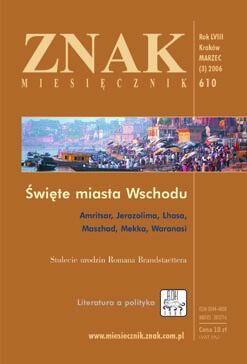
Inspirations - March 2006
Inspiracje - Marzec 2006
Keywords: holy cities of the East; literature
A recommendation for books dedicated to the holy cities of the East.
More...
Keywords: holy cities of the East; literature
A recommendation for books dedicated to the holy cities of the East.
More...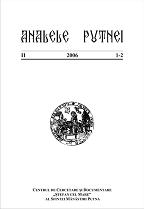
Keywords: Alba Iulia; the Faculty of Orthodox Theology; Altarul Reîntregirii journal; Reîntregirea Publishing House
The present study constitutes a short presentation of the institutional development of the Faculty of Orthodox Theology in Alba Iulia (1991-2011), comprising essential chapters such as: the development of academic specializations for BTh, MA and PhD, the structure of the managing board, the evolution of the teaching staff, of the Research Centre and of the official publication, the scientific and research activity, collaborations with international higher education institutions and centers, with the Orthodox Archdiocese in Alba Iulia and with local administrative and cultural institutions, the Faculty’s edifice and library and in the end some aspects of students’ life.
More...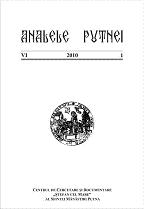
Keywords: family; genealogy; Middle Age; Moldavian boyars; Stephen the Great
This paper continues previous research on the genealogy of the boyars of Stephen the Great. We traced only kinship and marriage alliances between them, in order to create an edifying genealogy chart. Considering the work of other researchers, we dealt in detail only with a few hitherto overlooked dignitaries: Sima Zbiarea (1466–1498), Cozma Moghilă (1491–1513), Iaţcu Hudici (1456–1492), Şandru Tolcico (1449–1467), Purece (1491–1494), Luca Arbure (1498–1523), Crasnăş (1458–1467) and Dragoş Boul (1478–1491) – the years represent the period they appeared in the princely council. Up to now, the vast genealogical chart comprises 35 boyars out of more than 110 that were members of the council of Stephen the Great sometime between 1457 and 1504, not counting many others that held no official position. The 35 councilors are the offspring of nearly 30 boyars who were, in their turn, members of the princely councils sometime between the last decades of the 14th century and the beginning of the reign of Stephen the Great. These genealogical findings reveal old family and influence structures, transmitted hereditary, which lay at the basis of the government of Moldavia.
More...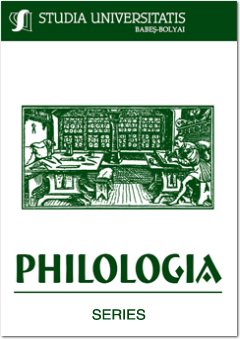
The Art and Craft of Translation, edited by Loredana FrăŃilă, is a collection of articles based on a series of lectures delivered to the participants in the international summer school The European Translator. Difficulties and Dilemmas, organized by the English Department of the Faculty of Letters at the University of Timis oara, in 2007. In her Foreword, the editor makes a strong case based on the conclusions of the event, which justifies the title of the volume: ‘to be able to say as little as possible and, at the same time, as much as necessary, in the most appropriate words means to use a translator’s tools the way a craftsman uses his/her tools, skillfully and with precision, but also to experiment with words, phrases, structures and creative devices the way an artist experiments with the material s/he moulds.’ (p. 1)
More...The genealogy of the grand boyars of the time of Stephen the Great can be traced back to the second part of fourteenth century. The boyars of Stephen the Great, and those of Petru Rareş and of Alexandru Lăpuşneanu, in the sixteenth century, were the descendants of the brave soldiers rallied around Dragoş and Bogdan, the founders of Moldavia. A demonstration of this assertion can only be made through prosopographical research. The present paper is focused on the families and kinships of ten members on the princely council of Stephen the Great: Ion Dobrul, stolnic Barsu, Cozma Şandrovici, pârcălab Şteful, Ivaşco Hrincovici, Steţco Dămăcuş, Oană Pântece, Hodco Ştibor, Toma Cândea, and Costea Orăş. The author’s research efforts point out to 20 additional officials of Stephen the Great, parents and relatives of the aforementioned boyars. It is concluded that the fundamental principle of all boyar families lay in successful matrimonial alliances with the purpose to preserve patrimony and determine an increase in the authority of the family. For this reason, the political elite of the time of Stephen the Great had old and extensive kinships.
More...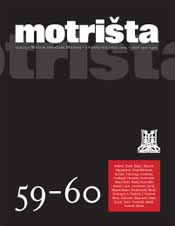
Diana Burazer /1953., Zagreb/ piše poeziju od gimnazijskih dana, tj. od vremena kada je živjela u Ljubuškom i kao gimnazijalka bila članicom gradskog književnog kluba Ars mea u Ljubuškom, zajedno s Milom Stojićem, Mirom Petrovićem, Nedjeljkom Galićem, Slobodanom i Munibom Delalićem .... krajem šezdesetih XX. stoljeća. Bila je to fatalna privlačnost uzvišene instrumentacije stvarnosti – što bi rekao Miroslav Krleža – instrumentacija koja postoji ili koje nema. Riječ je o apoetskim mozgovima u kojima je ima ili nema. Jer, apoetski mozgovi lišeni su osjećaja životnog intenziteta koji nesumnjivo postoji – opet će, Krleža. Njime kazano, poezija je uzvišena instrumentacija stvarnosti. Ne treba je objašnjavati kao ni osjećaje, ali to neizbježno činimo. /Valjda stoga jer nas neizbježno nadilazi intenzitetom smisla i značenja. Ona nadilazi djetinjstvo i bajke, sve strasti koje osjećamo. Stvarno postoji jasna i krvava – kaže Krleža./.
More...Keywords: history of death; cultural death; church records; burial customs; folk mentality
To understand the cultural meaning of death, criteria must set for classification of different types of death. There are two major sources for decoding the cultural categories of death: official documents, like testaments, parish registers and burial customs, rarely recorded on writing but preserved in practice until today. For Mureş County, the first secular writing on burial habits dated since early nineteenth century, the famous medical work of Vasile Popp about Transylvanian Romanian burial customs is almost contemporary with the first parish registers of the dead in the Romanian villages. We want to unravel not only the cultural types of death, according to parish registers, but their enrollment in either category. After written sources there are two types of death: ordinary and unusual, but what is the understanding of these categories? What influences have the circumstances of death on the cultural understanding of death? It is not as important the numbers of the death categories, as their components and the burial rites that must prevent or nullifying the negative impact of some death. In this perspective the most important kind of death is the “unusual death”, because it is more dangerous for living, but what the meaning of the unusual death is and what additional rites should be done?
More...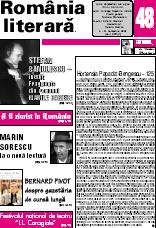
Keywords: Moldavian literature of the 90ies; Bessarabian literature of the 90ies; cyrillic writing in Moldavia; Drawer literature in Moldavia;
The author debates the poor state of the Basarabia prose of the 90ties, a literature which he declares buried in the cemetery of Cyrillic alphabet whose submissive so called "drawer writings "fail to show up.
More...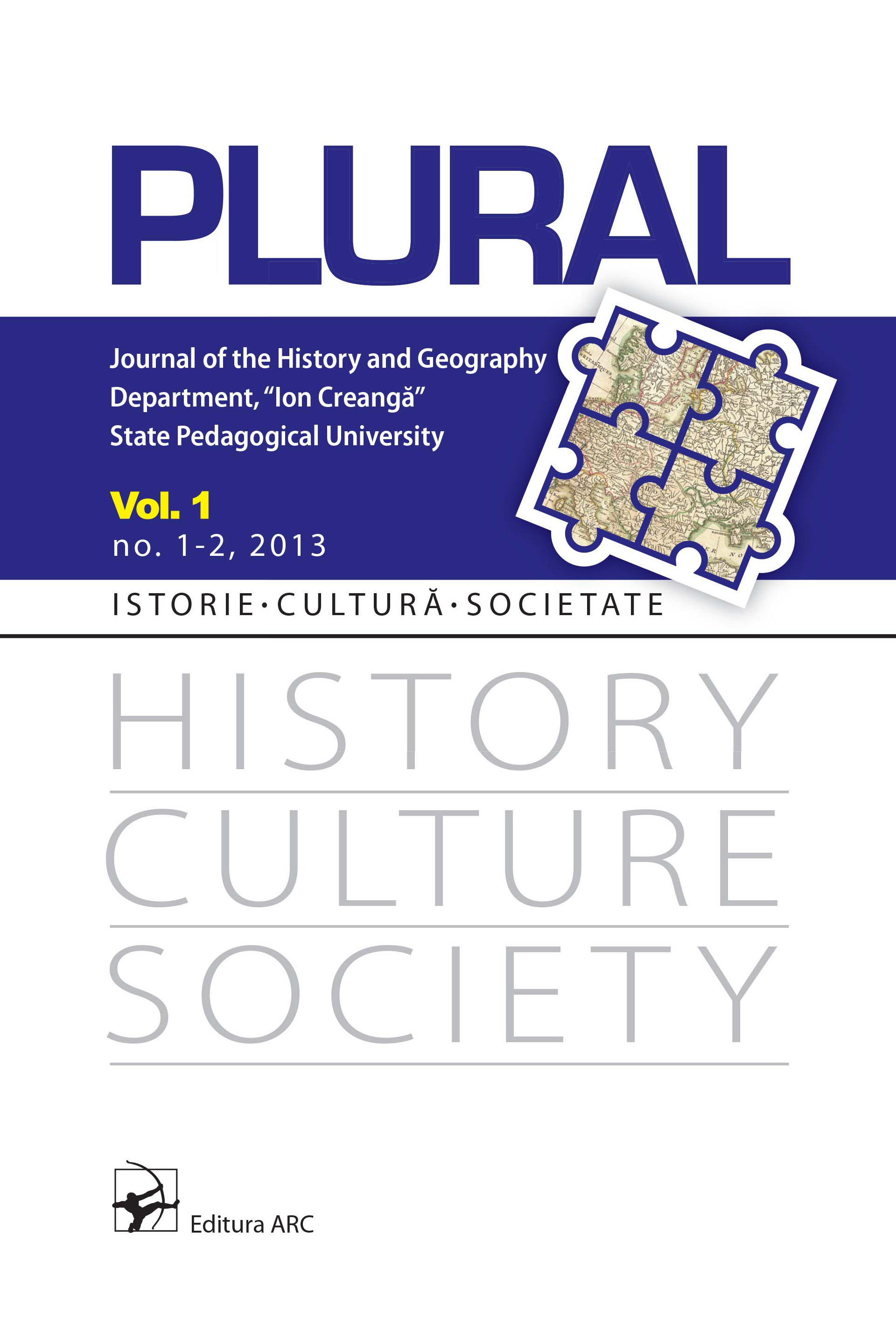
Keywords: cultural heritage;
More...Keywords: written media; audio media; political purges in romanian press; 1945
The field of written and audio media has undergone an intense process of purification on political criteria, a process which has been part of the overall policy of the authorities to fully subordinate their state and civil society structures by eliminating all those who did not fit the coordinates Traced by the new governors. This exclusion process intensified after March 6, 1945, with the assumption of the country's leadership by the government of Dr. Petru Groza, dominated by the Communist Party whose goal was to establish a totalitarian regime. The legislation adopted on the process of political purges has also taken into account the written and audio press and has been characterized by a strong repressive nature, the basis of this legislation being the Armistice Convention, concluded in Moscow on September 12, 1944, between Romania and the Allies
More...Keywords: genre; moi; l’autre, miroir; représentation; art
Depuis toujours, le dialogue a été vu par des théoriciens, y compris Gurevitch et Pfuetze, comme un instrument dans la construction d’un sens du moi. Dans le cas de Salman Rushdie et de David Lodge, le dialogue est d’habitude chargé des implications culturelles et métatextuelles aussi, mettant l’accent sur la complexité qui caractérise le processus de représentation. Le miroir, symbole classique et concept lacanien à la fois, est encore soutenu dans le cas des deux exemples choisis de Fury et Nice Work, qui s’avèrent de plus compliqués par les relations de genre qu’ils mènent.
More...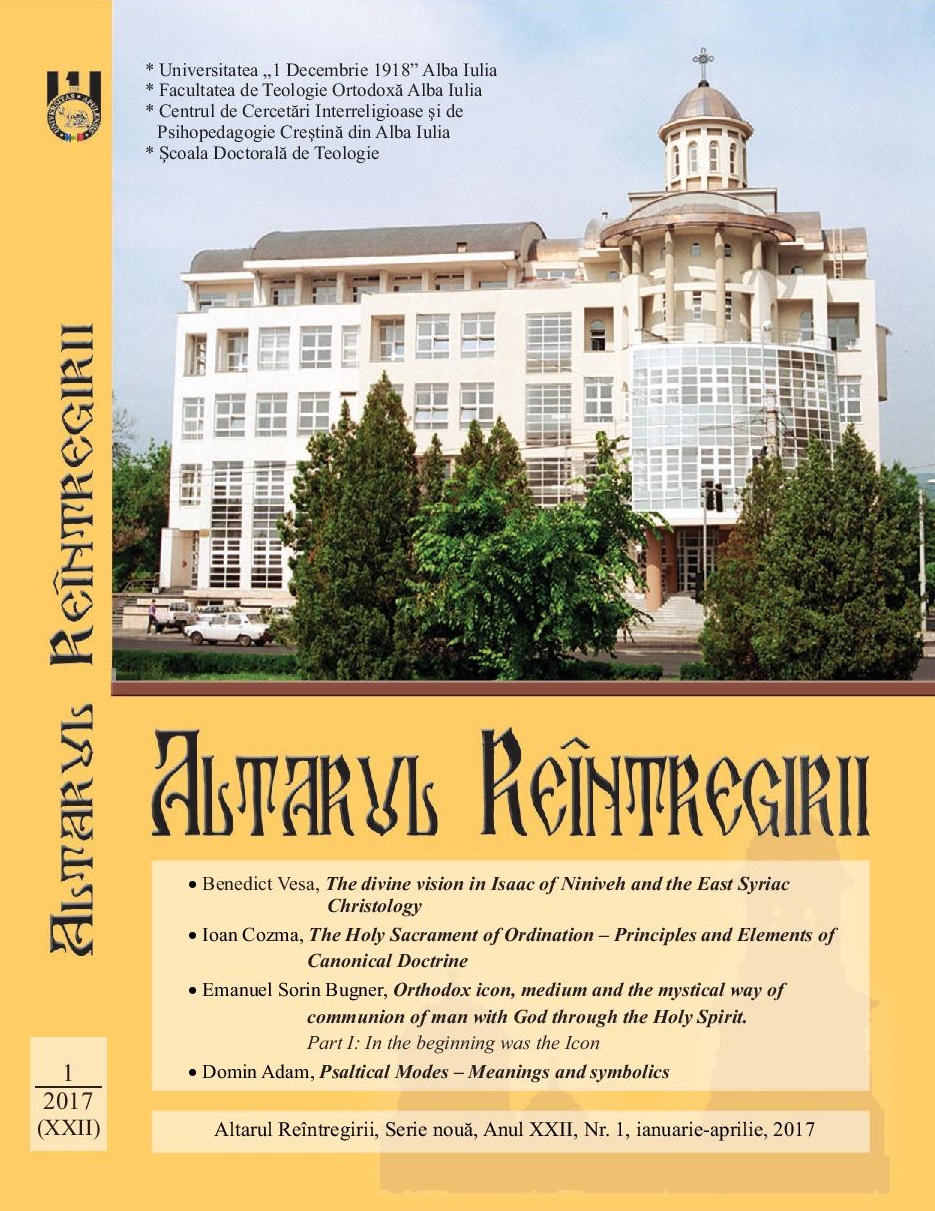
Keywords: ordination;holy canons;clergy;priesthood;women’s ordination;
The present study adds to the research dedicated to the Holy Sacrament of Ordination. The article begins with an explanation of terms, showing the difference between khirotonia and khirotesia; the first term being used for the act of introduction in the sacramental priesthood, while the second term denoted entry into the lower ranks of priesthood. Next, the study continued with a canonical assessment, in which, on the basis of sacred canons, I had shown who can administer this sacrament, as well as who the subjects of the ordination are. A particular emphasis was placed regarding the inability of women to be ordained. In the final part of the study, I have revealed what the legal and canonical effects are to the ordination mystery.
More...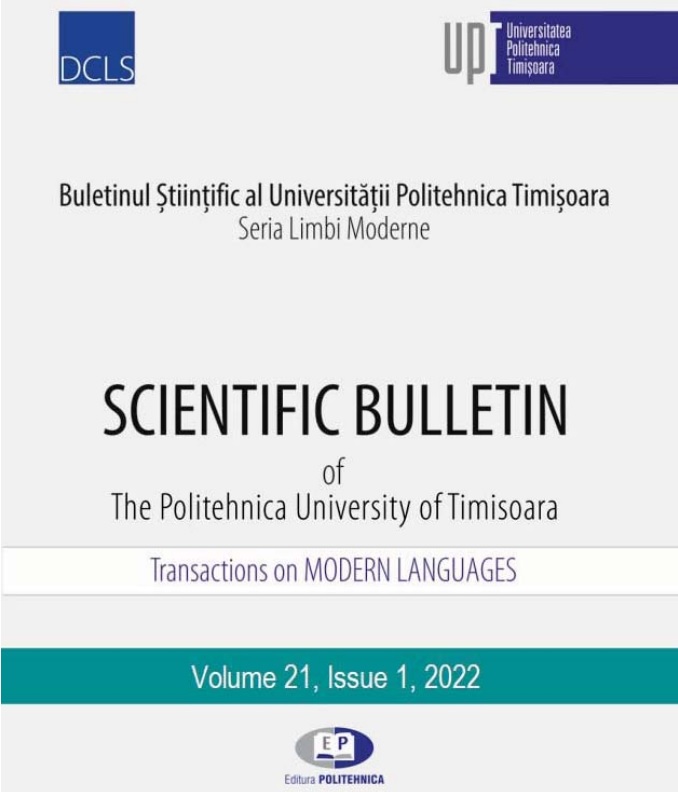
Keywords: review; language in the courtroom; American and Romanian Criminal Trials; Fărcaşiu Marcela Alina;
Review of: FĂRCAŞIU MARCELA ALINA. 2015. Language in the Courtroom: A Comparative Study of American and Romanian Criminal Trials. Cluj-Napoca: Casa Cărţii de Ştiinţă. ISBN 978-606-17-0672-3, pp. 302.
More...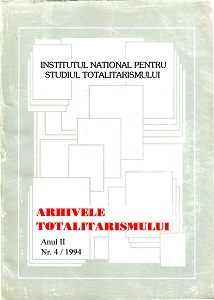
Keywords: Romania; Bukovina; communism; anti-communist resistance; partisans; 40s; 50s; dosuments;
The author presents documents on the daily life of the anti-communist partisans in 1944-1958's Bukovina. Information on the partisans equipment, weapons and ammunition is submitted, as it results from official documents (military court sentences) and testimony (accounts, interviews, memoirs). The documents will be published in a separate volume by the N.I.S.T.
More...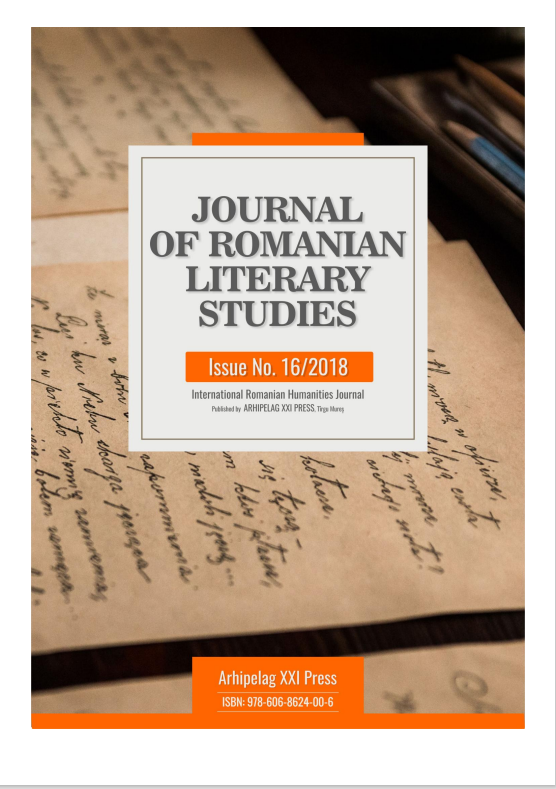
Keywords: miraculous; imagination; fabulous; unusual; science-fiction;
Many historians and literature theorists from different centuries, observe especially the fact that the phrase fantastic literature designate those very literature works which are very various that cannot be justified. The attempts of defining of this very literature are many and they are born from the desire to re-establish of a new pre-existing order, and through a synchronic and diachronic approach is trying to define that concept and the contents that it had throughout the history.
More...